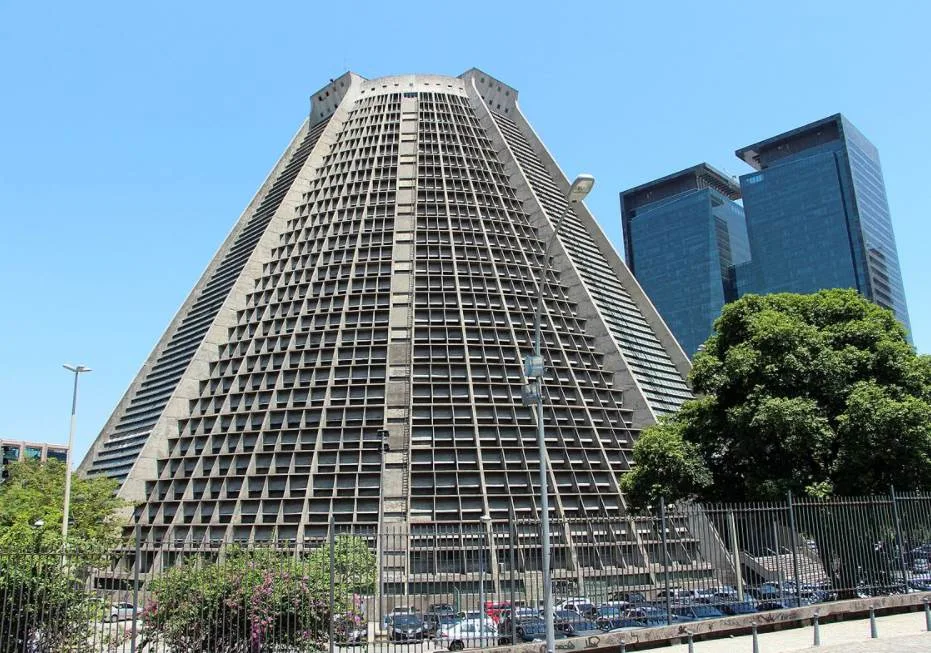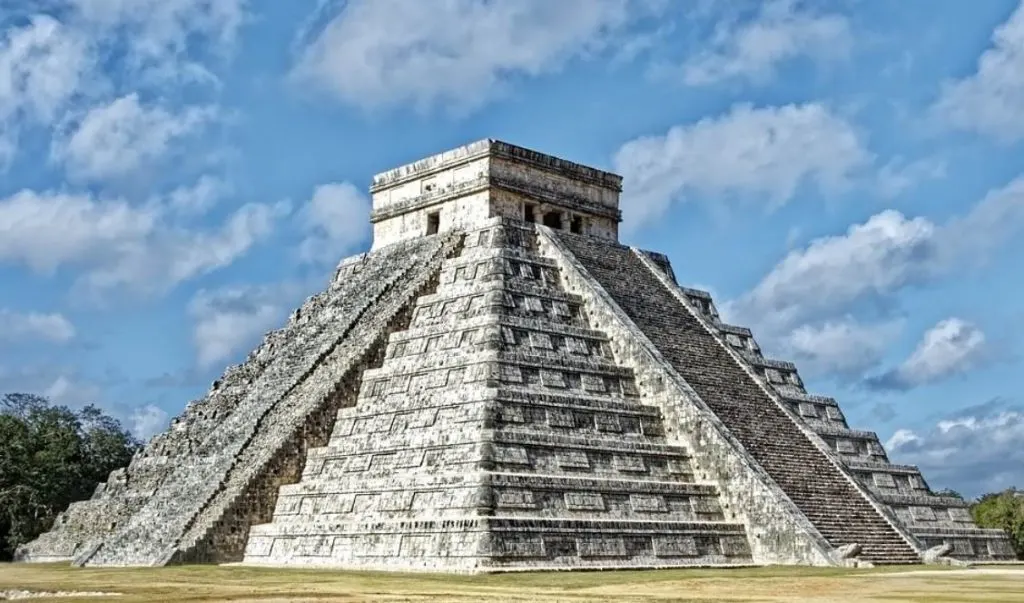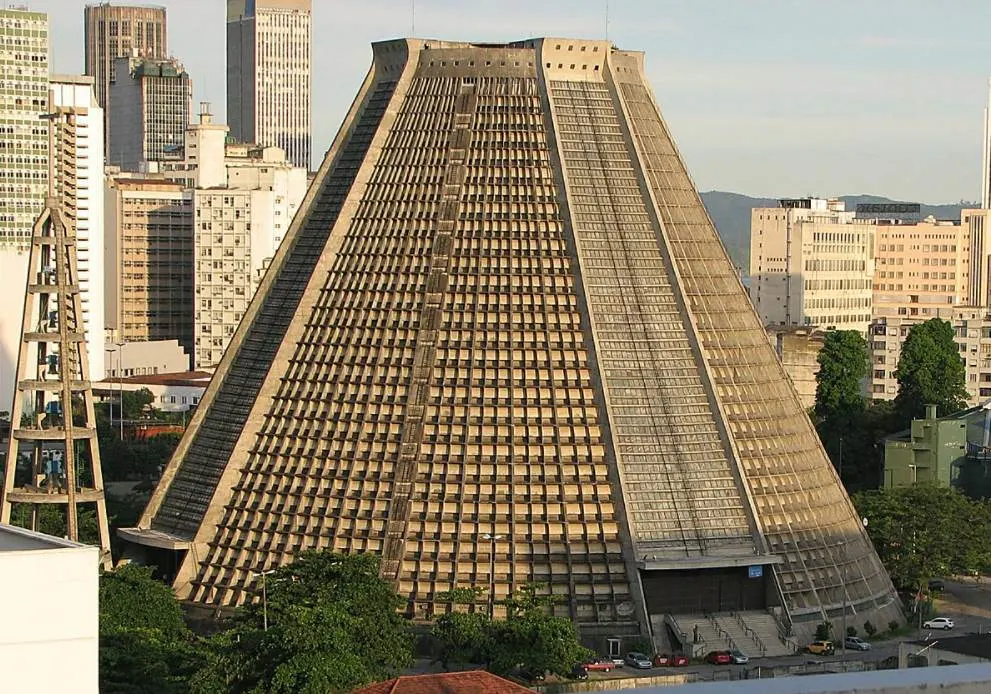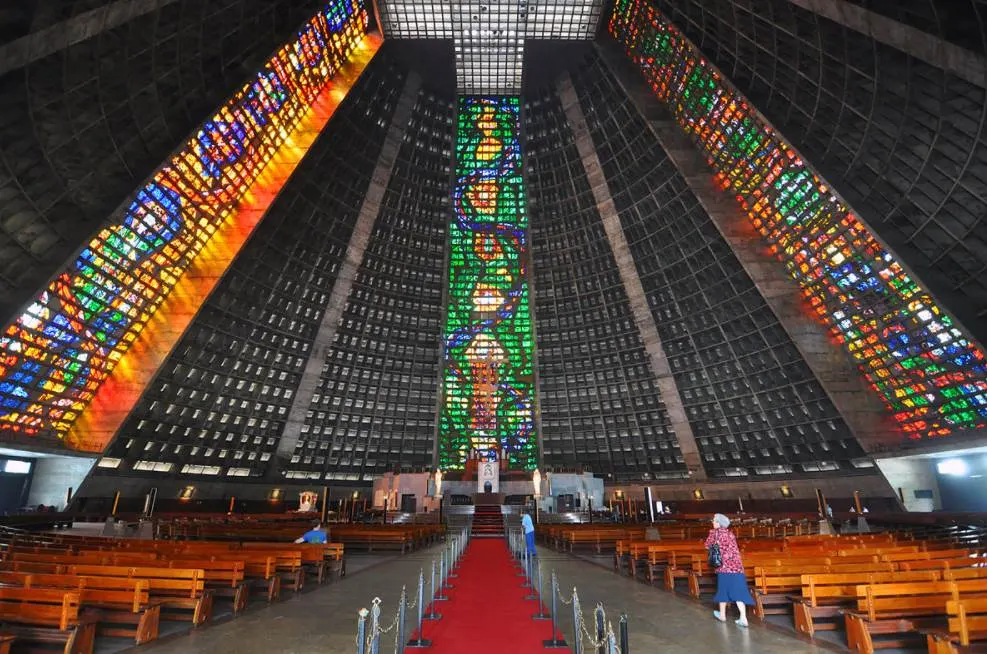One of the most remarkable churches in the world can be found in the second-most populous city in Brazil, Rio de Janeiro. That’s mainly because of its fascinating architectural design and enormous size.
Let’s take a closer look at some of the most interesting facts about the Rio de Janeiro Cathedral, one of the most fascinating religious structures in the world.
1. The cathedral is located in the center of Rio de Janeiro
Rio de Janeiro Cathedral is arguably one of the most astounding cathedrals you’ll ever come across. It doesn’t resemble the typical Gothic cathedrals or Baroque churches that you’ll find all across Europe as it has a peculiar modernist architectural design.
It’s located right in the center of the enormous city of Rio de Janeiro, the second-largest city in Brazil after São Paulo. This immense structure is pretty easy to find as well in this bustling downtown area of the city referred to as “Centro.”.
Other famous landmarks and spots of interest are the Museum of Modern Art of Rio de Janeiro, the 18th-century Carioca Aqueduct, and an abstract sculpture dedicated to victims of World War II known as the “Monumento Nacional aos Mortos da Segunda Guerra Mundial.”

2. It took 15 years to build during the 1960s and 1970s
The cathedral is a Roman Catholic church and the seat of the Archdiocese of São Sebastião do Rio de Janeiro and, unlike many churches that we already covered on Art Facts, was constructed fairly recently.
It took 15 years to erect this remarkable structure and was completed between 1964 and 1979. The year it was completed was also the year that it was consecrated.

3. It was built to replace a number of other churches in the city
As you surely expected, this wasn’t the first church that served as the official seat of the Archdiocese in the city. The first cathedral to serve this purpose was completed ay back in 1676 and multiple churches have followed since.
At the time the Rio de Janeiro Cathedral was completed it replaced a church that still exists today called the Church of Our Lady of Mount Carmel of the Ancient See.

This church was built between 1761 and 1770 and is now referred to as the “Old Cathedral” of Rio de Janeiro. This historic building is located in the Centro District of the city as well, just a few hundred meters to the northeast of the New Cathedral of Rio.

4. It was dedicated to the patron saint of Rio de Janeiro
While the Old Cathedral of Rio de Janeiro was dedicated to Our Lady of Mount Carmel, the patroness of the Carmelite Order, the New Cathedral was dedicated to the patron saint of Rio de Janeiro itself.
Saint Sebastian (256-288) is believed to have been killed by 3 arrows during the early stages of the persecution of Christians by Roman Emperor Diocletian in the third century A.D.
That’s why the official name of the cathedral is “Metropolitan Cathedral of Saint Sebastian” or “Catedral Metropolitana de São Sebastião.”
5. The design was derived from Maya architecture
Although the architectural design of the church can be described as modern architecture, it was derived from a type of architecture that flourished for thousands of years in the Americas, long before the Spanish set foot onto the continent.
The Pyramidal shape of the building was inspired by the pyramids built during the Mayan Civilization. These structures are now known as “Mesoamerican pyramids.”
The idea of Brazilian architect Edgar de Oliveira da Fonseca was to recreate this type of step pyramids that we can find in large Mayan cities such as Chichen Itza. El Castillo at Chichen Itza is probably the best example of this form of architecture.

6. The cathedral was built at a monumental scale
Because the cathedral is surrounded by towering skyscrapers, the architect had to find a way to make the structure a prominent addition to the Rio de Janeiro skyline. Granted, in the early 1960s, the number of skyscrapers in the Centro District wasn’t as high as it is today.
The cathedral has a conical shape and an internal diameter of about 96 meters (315 feet). The external diameter is slightly bigger at 106 meters (347 feet).
In order t make it a prominent landmark, it was also designed to be quite high with a maximum height of 75 meters (246 feet). These dimensions in combination with the remarkable shape of the structure make you stand in awe.

7. It has the same capacity of an average football stadium
The world-famous Maracaña Stadium is located just a few kilometers to the west of this remarkable cathedral in central Rio. We have to admit that the capacity inside the church is quite a bit less than that of this monumental football stadium which features 78,838 seats.
The church has a floor area of approximately 8,000 square meters 86,111 square feet) and there are 5,000 seats inside of it. During special events, the capacity can be extended to up to 20,000 standing people.
8. Rio de Janeiro Cathedral features 4 astounding stained glass windows
You don’t have to visit the Rio de Janeiro Cathedral to admire medieval stained glass windows such as you can find at Sainte Chapelle in Paris or York Minster in England, to name just a few prominent examples.
It’s worth noting, however, that the cathedral features 4 stained glass windows that cover a distance of 64 meters (210 feet) from the floor of the church, all the way to the upper section of this remarkable building.

